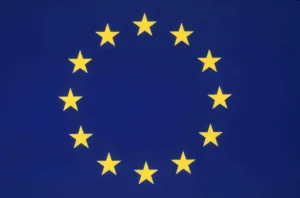At the end of June 2017, more than three-quarters of homes in the European Union had access to high-speed broadband services. For the first time, 4G LTE availability matched 3G HSPA networks, in terms of the number of households covered. The study was conducted by IHS Markit and broadband analyst firm, Point Topic. IHS Markit’s James Joiner commented:
“
VSDL was the fastest-growing fixed broadband technology for the sixth consecutive year, supported by the rapid rollout of VDSL networks in Italy and the Czech Republic. Both countries reported double-digit increases over the previous year.
Fiber-to-the-home (FTTP) coverage increased at a faster rate than in the previous iteration of the study, aided by deployments in France and Spain. However, growth in Docsis 3.0 networks has slowed, with the most densely populated areas already reached”.
Other key findings in the report include the following:
- At the end of June 2017, 176 million EU households had access to broadband delivered by next-generation access networks (VDSL, Docsis 3.0 and FTTP), which is 9.9 million more than at end of June 2017.
- By mid-2017, high-speed fixed broadband services with at least 30 Mbps download speeds were available to 79% of EU households.
- At a national level, 80.1% of households had access to NGA broadband, compared to 46.9% of rural households. The 33.2% difference was 3.5% lower than last year’s study, but the difference remains sizeable.
- VDSL remained the most widespread NGA technology in the EU, passing 53.4% of homes. Docsis 3.0 networks covered 44.7% of EU households, with FTTP availability reaching 26.8% of homes by mid-2017.
- For the first time, 3G HSPA coverage did not exceed 4G LTE coverage in the EU. Following a 1.9% increase in LTE availability, both mobile technologies covered 97.9% of EU households.
- Out of the 31 countries studied, 22 reported NGA coverage above 80%.
As was the case last year, Malta was the only country to record complete coverage for the NGA technology category, while Switzerland, Belgium, the Netherlands, Iceland and Portugal recorded coverage levels above 95%.
Greece was the lowest-ranked country in terms of the proportion of households covered by NGA networks. In addition, in Bulgaria, Romania, Croatia, Poland and France, NGA networks covered less than 75% of households in the first half of 2017.
In terms of FTTP availability, Portugal, Latvia, Lithuania and Spain led the EU, with FTTP networks reaching more than 70% of households in all four countries.
Operators in these countries have focused on FTTP deployments rather than upgrading existing DSL networks to VDSL. As a result, VDSL networks reached less than 20% of households in all four countries at the end of June 2017.
In contrast, fewer than 3% of households in Belgium, Greece and the UK had access to FTTP networks at the end of June 2017. Joyner concluded:
“Operators in Belgium and the UK have prioritised VDSL upgrades over FTTP deployment, therefore both countries are ranked in the top four EU member states in terms of VDSL availability. With VDSL upgrades near completion, operators in Belgium and the UK have announced plans to accelerate FTTP deployment, which will begin to be reflected in next year’s study”.

